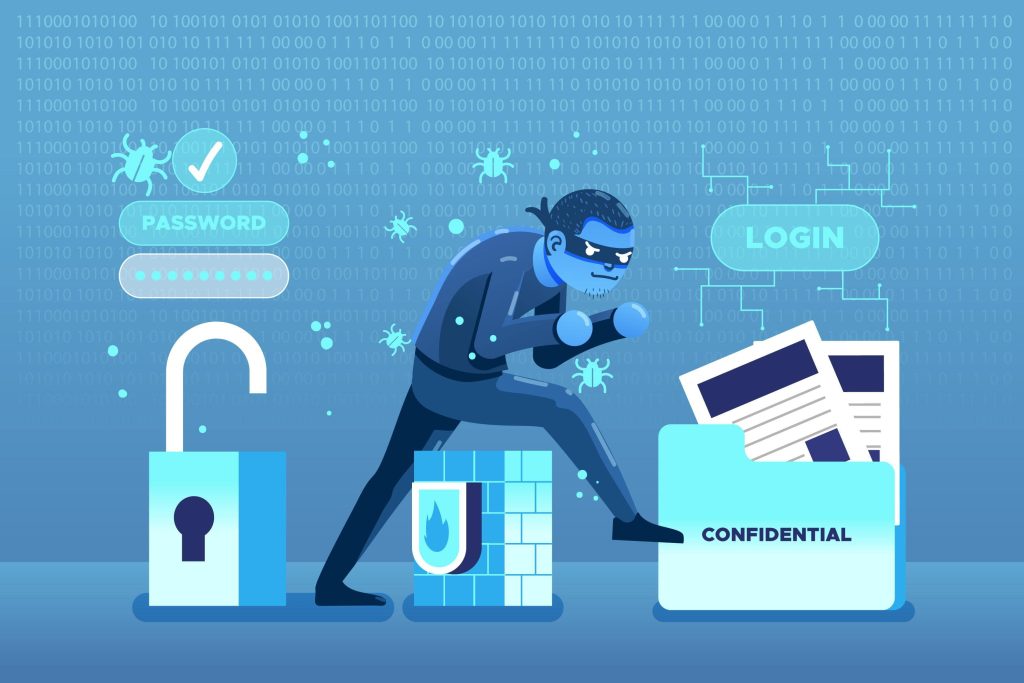By now you must have known the importance of having cybersecurity and the impact a cyberattack leaves. Everything has a procedure and so does Cyberattack. Cyberattack is also a step-by-step process that leads to the destruction of the company. Cyberattacks have increased rapidly in the past few years. The process of the attack remains the same but in an enhanced way i.e. the steps are basic but used in an advanced way.
What is the Cyberattack?
Cyberattacks is an effort to steal, expose, alter, or disable data, applications, or other assets through unauthorized access to a network, computer system, or digital device.
What do you mean by Cyberattack Stages?
Cyberattacks also known as cyber kill chain is a process i.e. the way a cyber attack works. There are different stages of cyberattacks reconnaissance, weaponization, exploitation, installation, command and control, and actions on the objective.
To protect a company’s system and data from getting attacked prevention must occur at every stage, every minute.
What are the Stages of Cyberattack?
The following is the explanation of 6 cyberattack stages :
- Reconnaissance – Reconnaissance is the first stage of the Cyberattack. The word Reconnaissance means inspection and observation. The attackers research, identify, and select targets to achieve their goals. They gather information through social sites like Twitter, Linkedin, and corporate sites. They will also look for broken links, that can help them cause disruptions to the Business’s network system.
- Weaponization – After the first stage is over, the second stage starts. After reconnaissance, the attackers decide which method to use to hack the system. This is known as weaponization. Some common methods that they use are automated tools, spear phishing attacks, etc. In several cases, it takes only one employee account to provide access to the system.
- Exploitation – After research and selection of the tool, the attackers use the broken link to enter the system of the organization and they succeed in doing so.
- Installation – Once they have set their foothold attackers will start to install the malware to conduct further operations such as giving access and privileges.
- Command and Control– With the malware installed, attackers now own both: the infected infrastructure and the machine. Now as they have access they can control the whole system and start with their plan of attacks. Attackers will establish a medium of communication between the infected infrastructure and their infrastructure to pass the data back and forth.
- Actions on the Objective- Now that they have the whole access and control to the system, they have the data collected in their system, their final step is to act on the objective for which they have done the Cyberattack. It could be the destruction of critical infrastructure, to creation of fear, etc.
How to Break the Cyberattack Pattern?
- Understanding Advanced attacks: Advanced attacks are complex, requiring professionals to navigate every stage of the attack lifecycle to succeed. If they fail to exploit vulnerabilities, they can’t install malware or gain command and control over the system.
- The Role Of Technology and Training: Disrupting the cyberattack lifecycle isn’t just about technology, it’s also about people and processes. People need continuous security awareness training and education in best practices to minimize the chances of a cyberattack moving past the initial stage. Additionally, effective processes and policies must be in place for remediation if an attacker does manage to advance through the entire lifecycle.
- A Defender Strategy: An attacker must flawlessly execute every step to succeed, while a network defender needs to succeed in just one aspect to save from an attack. This dynamic provides defenders with multiple opportunities to prevent breaches, making the human factor and process integrity just as crucial as the technology employed.
What are the Threats related to Cyberattacks?
If we look deeply, there are more than 10 threats but the major threats that can affect us are as follows:
- Ransomware: Ransomware is a cyberattack threat limiting or preventing users from accessing their system. In this type of threat, the attacker asks you to pay a ransom ( money ), using the online method in exchange for giving access back. Ransomware attacks are tough to detect and it has been continuously evolving making them harder to detect.
- Malware: Malware or malicious software is installed in the computer system to compromise the confidentiality, integrity, and availability of data. It is done in secret and it is so harmful that it can affect your system, data, and application breach.
- Distributed Denial Of Service (Ddos): Ddos is a type of attack that makes an online service unavailable with excess traffic. Website response becomes slow, preventing access during the attack.
- Phishing: Phishing is a type of social engineering that attempts to gain confidential information of the user by driving it through a fake link to a website where the user puts its confidential information since the website or link looks real.
- Corporate Account Takeover: CATO is a business entity theft that attempts to steal or attack user information by impersonating the business. Companies with weak computer safeguards and minimal controls are the easy targets.
Conclusion
Imagine a determined burglar trying to break into a house. They must find an unlocked door or window, avoid triggering the alarm, and remain undetected while stealing valuables. If any of these steps fail, the burglary is thwarted. Similarly, in cybersecurity, attackers can’t advance their malicious plans if they can’t exploit vulnerabilities.
In this high-stakes game of cybersecurity, we have an edge. While attackers need everything to go perfectly, we need just one successful defense to stop them. Every security measure, from training sessions to response protocols, gives us another chance to protect our systems and data.

